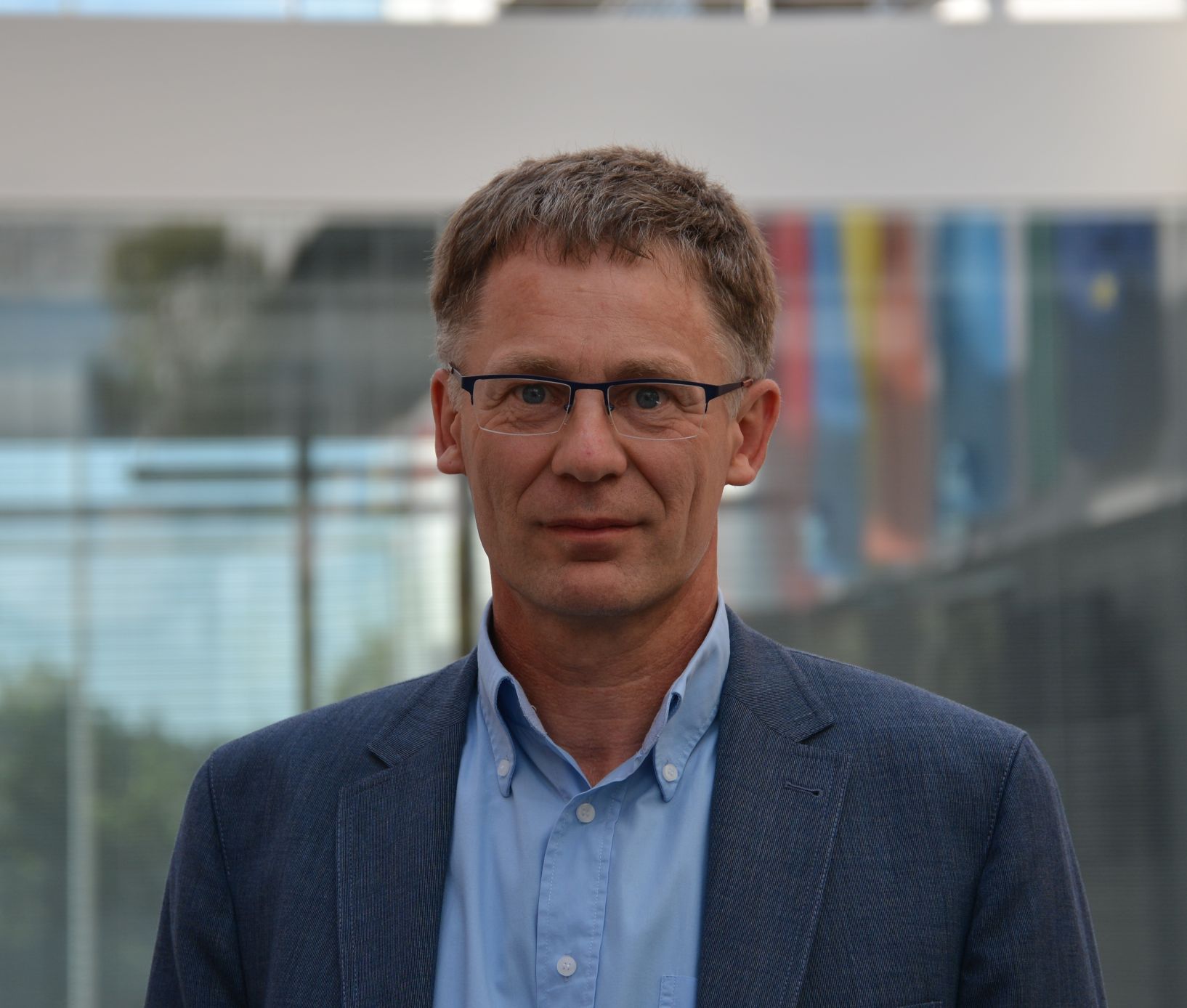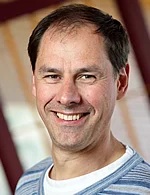
In this talk, recent aspects about hyperspectral image processing will be covered, with particular emphasis on spectral unmixing algorithms and their efficient implementation in high performance computing architectures. The talk will also cover recent trends in the application of deep learning algorithms for remotely sensed hyperspectral data interpretation.
Prof. Antonio Plaza (M’02-SM’05-F’15) is a Full Professor and the Head of the Hyperspectral Computing Laboratory at the Department of Technology of Computers and Communications, University of Extremadura, where he received the M.Sc. degree in 1999 and the PhD degree in 2002, both in Computer Engineering. His main research interests comprise hyperspectral data processing and parallel computing of remote sensing data. He has authored more than 600 publications in this field, including over 330 JCR journal papers (more than 240 in IEEE journals), 24 book chapters, and over 300 peer-reviewed conference proceeding papers. He has guest edited 10 special issues on hyperspectral remote sensing for different journals. Prof. Plaza is a Fellow of IEEE “for contributions to hyperspectral data processing and parallel computing of Earth observation data” and a member of Academia Europaea, The Academy of Europe. He is a recipient of the recognition of Best Reviewers of the IEEE Geoscience and Remote Sensing Letters (in 2009) and a recipient of the recognition of Best Reviewers of the IEEE Transactions on Geoscience and Remote Sensing (in 2010), for which he served as Associate Editor in 2007-2012. He is also an Associate Editor for IEEE Access (receiving the recognition of Outstanding Associate Editor for the journal in 2017), and was also member of the Editorial Board of the IEEE Geoscience and Remote Sensing Newsletter (2011-2012) and the IEEE Geoscience and Remote Sensing Magazine (2013). He was also a member of the steering committee of the IEEE Journal of Selected Topics in Applied Earth Observations and Remote Sensing (JSTARS). He is a recipient of the Best Column Award of the IEEE Signal Processing Magazine in 2015, the 2013 Best Paper Award of the JSTARS journal, and the most highly cited paper (2005-2010) in the Journal of Parallel and Distributed Computing. He received best paper awards at the IEEE Workshop on Hyperspectral Image and Signal Processing: Evolution in Remote Sensing, the IEEE International Conference on Space Technology, and the IEEE Symposium on Signal Processing and Information Technology. He served as the Director of Education Activities for the IEEE Geoscience and Remote Sensing Society (GRSS) in 2011-2012, and as President of the Spanish Chapter of IEEE GRSS in 2012-2016. He is currently serving as Chair of the Publications Awards Committee of IEEE GRSS and as a Vice-Chair of the Fellow Evaluations Committee of IEEE GRSS. He has reviewed more than 500 manuscripts for over 50 different journals. He served as the Editor-in-Chief of the IEEE Transactions on Geoscience and Remote Sensing journal for five years (2013-2017) and is currently serving as the Editor-in-Chief of the IEEE Journal on Miniaturization for air and Space Systems. He has been included in the 2018, 2019 and 2020 Highly Cited Researchers List (Clarivate Analytics). Additional information: http://www.umbc.edu/rssipl/people/aplaza

The use of Synthetic Aperture Radar (SAR) data for geodetic applications mature today. Satellite data are available abundantly from governmental and from industrial missions with global coverage and with very high resolution.
The course gives a brief introduction to SAR interferometry and SAR imaging geometry. Then two different techniques will be presented: Persistent Scatterer Interferometry (PSI) and Imaging Geodesy.
Ground motion services based on the PSI technique have been established nationwide and are currently built for the whole of Europe. Nevertheless, there is still room for improvement in many aspects, e.g., to increase the accuracy by reducing the influence of atmospheric refraction and by composing 2D and 3D deformation vectors from 1D observations. The tutorial explains the theory of PSI and some recent advances such as atmospheric phase reduction using numerical weather models. Practical examples from the German and European ground motion service are shown.
Another technique that is not fully established today is to take advantage of the inherently precise geometry of SAR. By applying geodetic techniques that are standard in GNSS but not as widely used in the SAR community, objects can be located with centimeter accuracy in the TerraSAR-X image plane and with about 6 centimeter accuracy in 3D. Similar values can be achieved with Sentinel-1 data, and ESA is working on an auxiliary geodetic correction product that will be simple to use and reduce the geometric error of Sentinel-1 to a few centimeters. The tutorial covers various technical aspects of SAR geodesy, from orbit determination to solid Earth tides and weather models, and shows practical application examples for precise point positioning.
Michael Eineder is heading the SAR signal processing department at the Remote Sensing Technology Institute of the German Aerospace Center (DLR). He received the Diploma degree in Electrical Engineering from the Technische Universität München (TUM) in 1990 and the Dr. rer. nat. degree from the University of Innsbruck in 2004. He is a TUM honorary professor, IEEE Fellow and member of the board of directors of the Carl-Cranz-Gesellschaft e.V. His responsibilities encompass the development of SAR and InSAR processing algorithms and systems for current and future radar missions. Furthermore, he is a part-time lecturer for remote sensing at the Technische Universität München. He joined DLR in 1990 where he has worked on a variety of international missions including SIR-C/X-SAR, SRTM/X-SAR (with NASA), ERS-1, Sentinel-1 (with ESA), TerraSAR-X and TanDEM-X (Germany). His current research interest is focused on future SAR missions, SAR interferometry and on Imaging Geodesy, an absolute positioning technique exploiting high resolution SAR.

The purpose of this tutorial is to provide an overview of how geodata, in particular imagery derived from satellite and drone platforms, are being used to make disaster event management more effective and efficient. I will trace the origins of remote sensing (RS)-based damage mapping that date back more than 100 years, and lay out how persistent challenges can be explained. I will further review where satellites of different types excel but also have their limits, and what promise novel constellations such as Sentinel or PlanetLabs hold. One main focus of the tutorial will be to assess the potential of drones in disaster response and damage detection, platforms that are growing in versatility and sophistication, and that increasingly allow the mapping even of interior spaces, but also semi-autonomous decision making and mapping, and real-time on-board data processing. The latter in particular increasingly makes use of advanced machine learning approaches. Nevertheless, despite growing technical prowess several inherent limitations of damage assessment remain, including in the slowly growing area of functional damage assessment.
A second part of the tutorial will focus on how the satellite imagery rapidly acquired after an event is being processed, and what role volunteered geographic information (VGI/crowdsourcing) plays. Developments here illustrate well how the domain has morphed from one dominated by large government agencies or international collaborative agreements such as the Disaster Charter, to a crowded field where space agencies now coexist with increasingly powerful tech companies, but also smaller NGOs – an impressive arsenal of resources, though one that continues to lack coordination.
The tutorial will conclude with a brief look at the emerging field of Early Action, in particular impact-based forecasting, which is being promoted by the humanitarian sector that does not consider a hazard or risk map, or the forecast of a potentially disastrous event sufficient. Instead the community asks for detailed predictions of actual expected losses, in fact a last-minute risk assessment, and ideally with some days lead time to allow meaningful action, such as forecast-based financing, to take place, all with the aim of minimising the overall losses and help affected communities recover more quickly and thus build resilience. Naturally, the entire process strongly builds on the use of geodata.
Prof. Dr. Norman Kerle holds the chair of RemoteSensing and Disaster Risk Management at the faculty of GeoinformationScience and Earth Observation (ITC) at the University of Twente in Enschede,The Netherlands. His work has been combining the two domains for more than 20years, including his PhD research in volcano remote sensing (2002) at theUniversity of Cambridge (UK). His main research interest centres onpost-disaster response and damage assessment with geodata, where the deploymentof many novel satellite systems over the last 2 decades has led to highlydiverse methodologies to assess the consequences of disasters. Theproliferation of both experimental and commercial drones/UAV over the last 10years has been even more remarkable, and has allowed damage assessment at a farmore sophisticated level. Recent methodological advances very well illustrate ashift from more traditional image processing and photogrammetry approachestowards state-of-the-art computer vision and computer science methods, andincreasingly different forms of machine learning. In recent years the damageassessment work has been extended to include also post-disaster recoveryassessment, coupled with macro-economic modelling, both linked to resilience,and includes the use of crowdsourced information/VGI. Another line of researchis together with the humanitarian community on so-called early action, inparticular impact-based forecasting and its improvement and validation. Much ofthe research is carried out through projects funded through the EuropeanCommission, and has led to more than 100 journal papers and book contributions.For more details see https://research.utwente.nl/en/persons/norman-kerle.


The overarching framework of this tutorial is related to the diagnostic of current situations and the prognostic of possible evolutions for water resources within cultivated landscapes, with a focus on Mediterranean rainfed agrosystems. We focus on the contribution of remote sensing technologies at fine resolution in time and space for the characterisation of structures (e.g., pedological properties, topography), fluxes (e.g., soil water content, evapotranspiration) and evolutions (e.g., vegetation growth, storage within lakes). In a first time, we address new monitoring technologies, including (1) observation technologies : various platforms from UAV to spaceborne, active and passive sensors on different spectral domains, combinations with other observation techniques such as geophysical measurements or agricultural surveys, (2) processing methods : statistical and geo-statistical approaches, radiative transfer modelling, photogrammetric processing. In a second time, we address the joint use of remote sensing products with modelling tools of land surface process, including (1) digital representation of landscape structures thanks to typology-based segmentations (2) numerical simulations of water fluxes and vegetation functioning, on the basis parsimonious approaches that make best use of remote sensing imageries. We finally address caveats and way forward, including forthcoming satellite missions, synergistic use of remote sensing data along with other sources of observations, and forthcoming use of machine learning for meta-modelling.
Prof Jean-Stéphane Bailly is a full time professor at AgroParisTech in physical geography. His background is in agronomy and geostatistics. He used to be the director of the Water Sciences MSc, Montpellier and is now the director of the LISAH research lab, Montpellier - France. Its research is devoted to spatial estimation methods for cultivated landscape characteristics including the combination of spatial statistics and active (LiDAR) or passive remote sensing. He also works on the cultivated landscape modelling and on methods for spatial modelling numerical exploration. He has been working in many Mediterranean cultivated landscapes (Tunisia, Morocco, Lebanon, Italy, France) and supervised 2 post-doctorants, 11 PhD students, and 36 MSc students. He has published 87 peer-reviewed articles, 11 book chapters. He was the author of the best paper award 2006 of the International Association of Mathematical Geosciences, 2006 - Mc Gill. He is the European steering committee member of the International Spatial Accuracy Research Association.
Dr. Frédéric Jacob is a research director at IRD in remote sensing and eco-hydrology. His background is the use of spectral, angular, spatial and temporal information collected from optical remote sensing for the retrieval of crop water consumption and related drivers. He is now investigating the use of in-situ and remote sensing data for characterising crop water consumption under complex situations such as hilly and heterogeneous landscapes and discontinuous crop canopies. At the collective scale through management responsibilities (co-director of the NAILA international joint laboratory, deputy director of the LISAH French joint research unit), he has studied the structuring, the functioning and the evolution of cultivated landscapes, as well as the modulation of landscape structures for the setting up of trade-off between different ecosystems services. He has served as an associate editor for IEEE-GRSL since 2003 (IEEE senior member since 2015), as an evaluator and audit expert for H2020 proposals and granted projets, respectively, since 2018, and as a scientific committee member of CNES / NASA / ISRO space missions since 2009. He has supervised 4 post-doctors researchers, 6 PhD students, 4 contract engineers, and 18 MSc students. He has published 78 peer-reviewed articles, 4 book chapters, 1 white book; and he has edited a special issue in IEEE-GRSL.